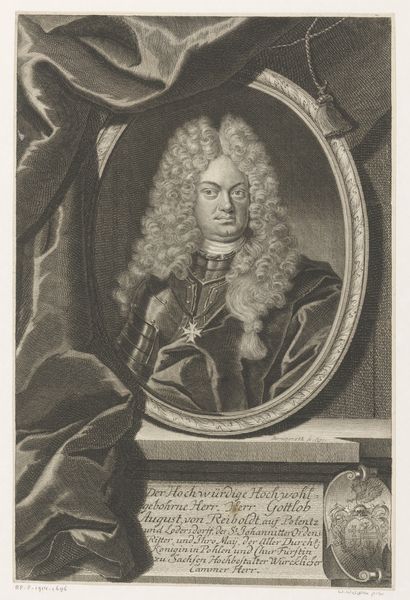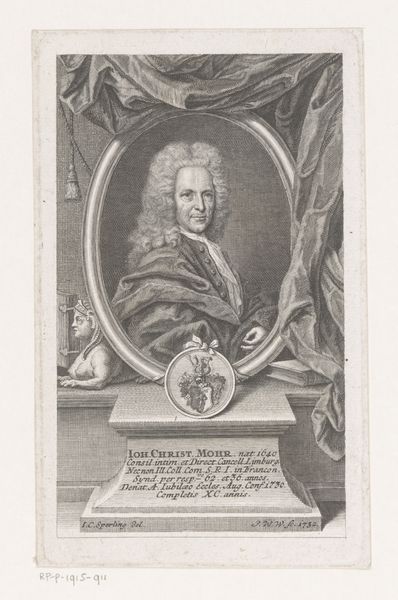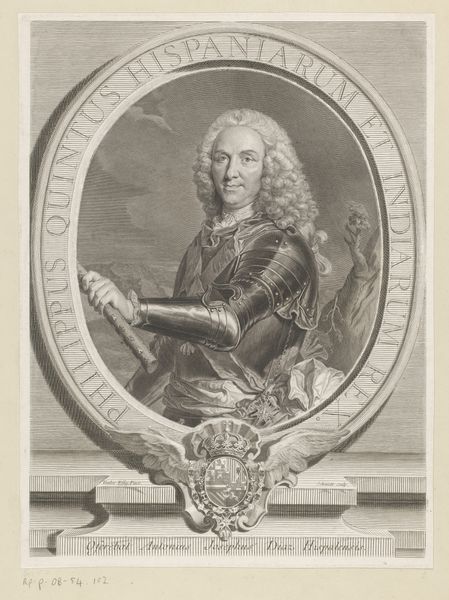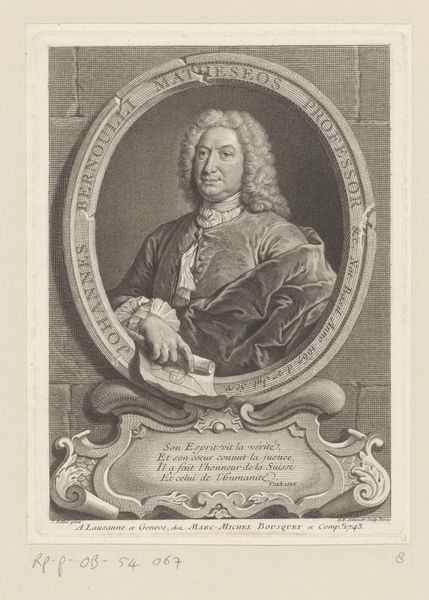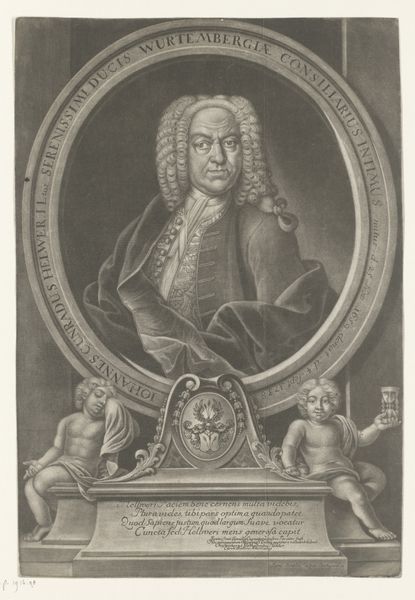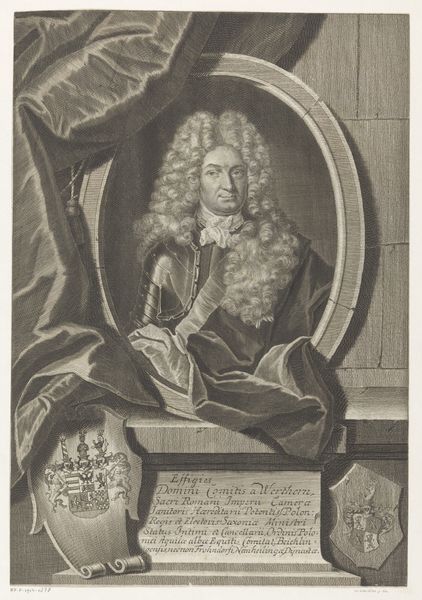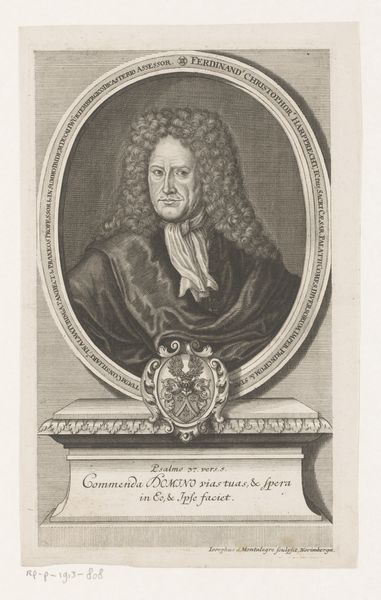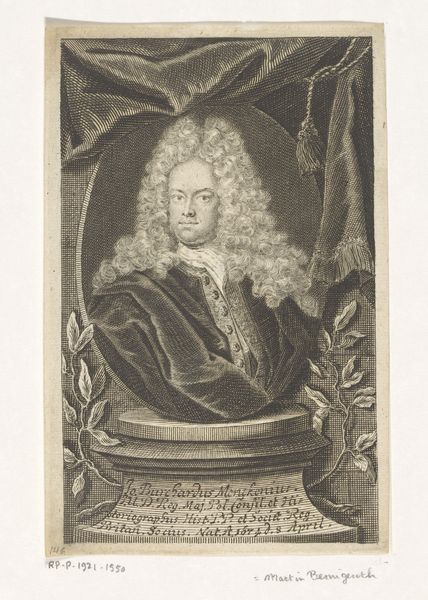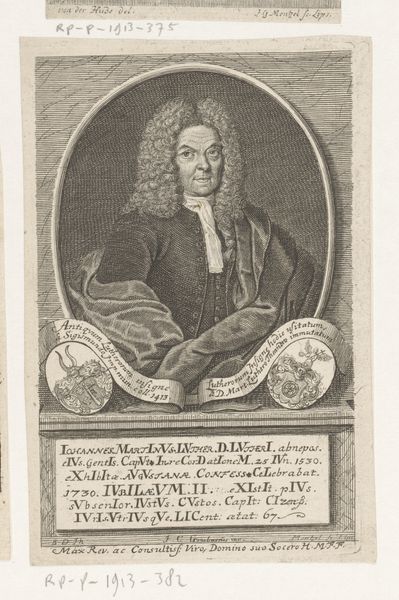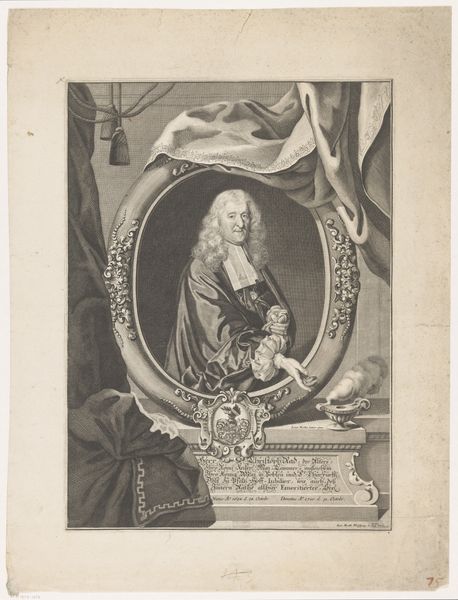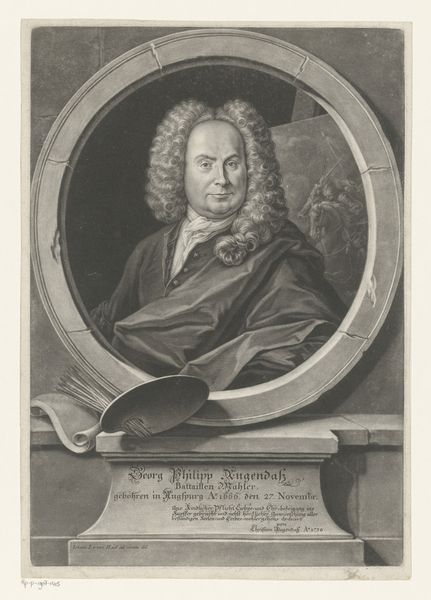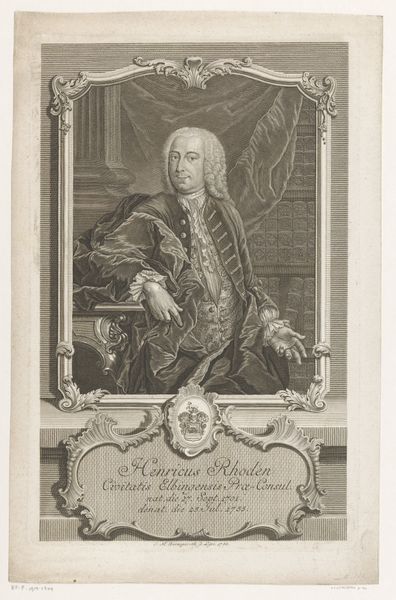
engraving
#
portrait
#
16_19th-century
#
baroque
#
old engraving style
#
unrealistic statue
#
19th century
#
engraving
Dimensions: height 358 mm, width 234 mm
Copyright: Rijks Museum: Open Domain
Editor: So, here we have a piece titled "Portret van Johann Peter Heinrici," made sometime between 1723 and 1749 by Johann Friedrich Rosbach. It's an engraving currently held at the Rijksmuseum. It has this grand, almost theatrical feel with the heavy drapery, but also feels somehow rigid. How do you interpret this work, considering its historical context? Curator: This engraving, viewed through an activist lens, becomes a fascinating document of power and representation in 18th-century society. It’s not just a portrait; it’s a carefully constructed performance of identity and authority. The Baroque style itself, with its elaborate detail and emphasis on ornamentation, reflects the social and political structures of the time. Editor: Performance of identity? What do you mean by that? Curator: Consider the subject's clothing, the elaborate wig, even the inscription below—these aren't just stylistic choices; they’re markers of social status and belonging. This image seeks to portray Heinrici as someone important, someone who commands respect. What social institutions or power dynamics do you think are at play here? Think about the Church, wealth... Editor: Well, the inscription references his role as an inspector, so certainly institutions of education. Curator: Exactly. And how does this portrait, with its clear markers of status, contribute to either solidifying or challenging the social hierarchy of the time? Does the very act of creating and circulating such an image reinforce existing power structures, or does it offer some subtle form of negotiation or resistance? Editor: That's a really interesting way to think about it. I've never really considered how portraits can be involved in these wider discussions of social power. Curator: It's about looking beyond the surface, questioning what the artist and patron are trying to communicate about identity, power, and their place in the world. It really encourages a more critical and socially aware appreciation of art history. Editor: Definitely! It's helped me see a different perspective in these 18th-century engravings. Thanks.
Comments
No comments
Be the first to comment and join the conversation on the ultimate creative platform.
